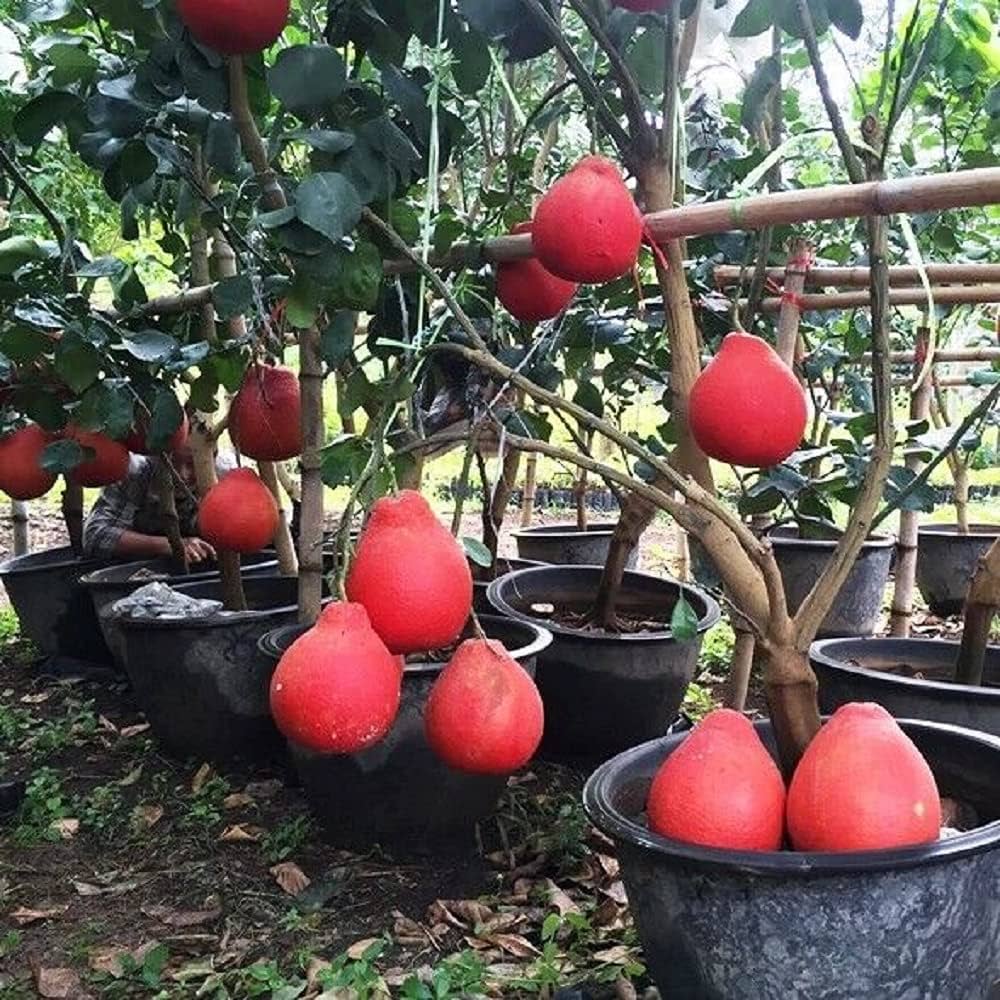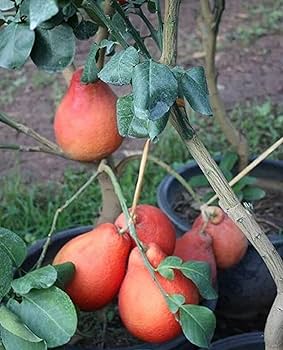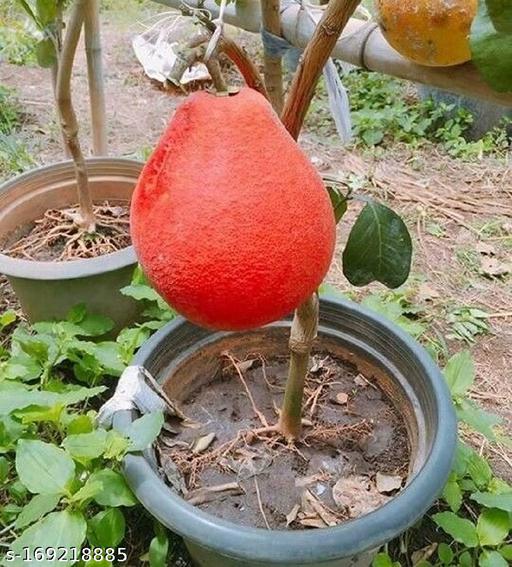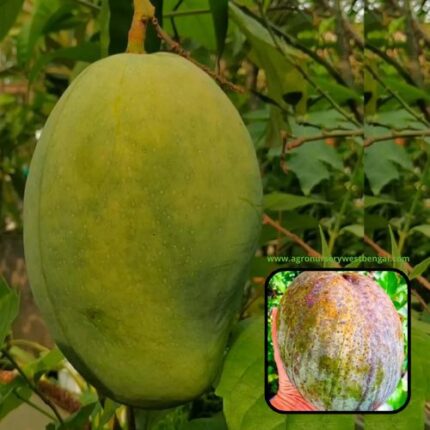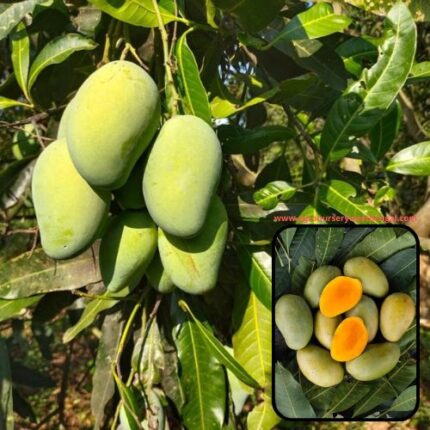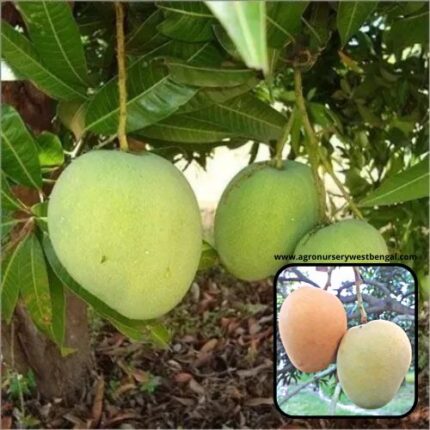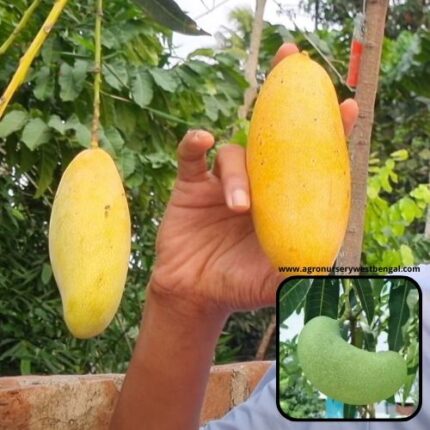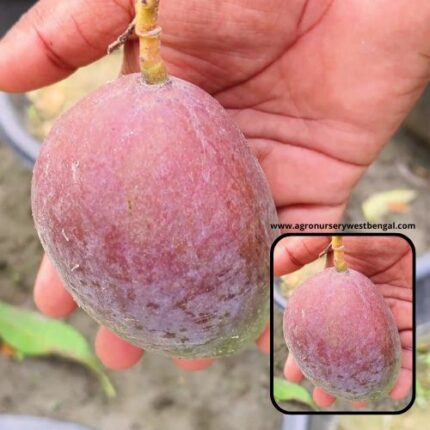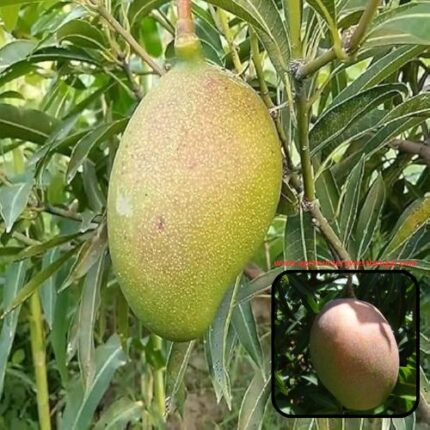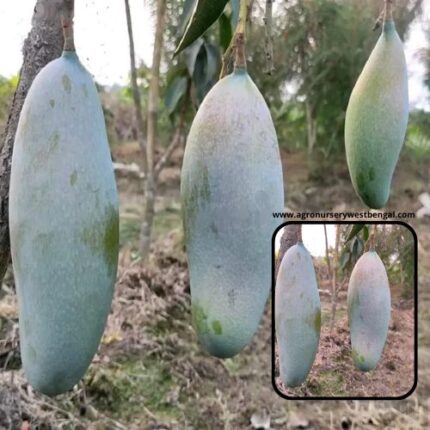



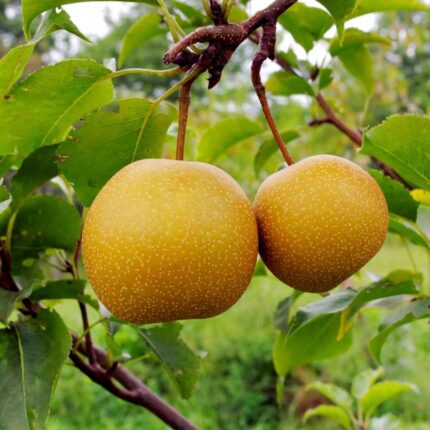
Red Jambura fruit plant
₹1,199 Original price was: ₹1,199.₹699Current price is: ₹699.
“Red Jambura” refers to a variety of Pomelo (Citrus maxima or Citrus grandis), which is the largest citrus fruit in the world and an ancestor of the grapefruit. In West Bengal, it’s commonly known as “Batabi Lebu” or “Chakotra,” and the red varieties are particularly prized for their color and taste.
Here’s a detailed description of the Red Jambura fruit:
1. Botanical Classification:
- Scientific Name: Citrus maxima (or Citrus grandis) – specifically a cultivar that develops red or pinkish flesh.
- Family: Rutaceae (Citrus family).
2. The Plant (Tree):
- Appearance: The Red Jambura tree is a medium-sized evergreen citrus tree, typically growing 5 to 15 meters (16 to 50 feet) tall. It has a broad, irregular canopy.
- Leaves: Large, glossy, dark green leaves with distinctly winged petioles (leaf stalks).
- Flowers: Small, fragrant, white flowers that bloom in clusters, often with a waxy appearance.
- Cultivation in West Bengal: Red Jambura (Batabi Lebu) is indeed cultivated in West Bengal, where the climate is suitable for citrus. You can find nurseries selling grafted plants of “Red Jambura Pomelo” or “Thai Red Pomelo” in the region.
3. The Fruit:
- Appearance:
- Size & Shape: It’s a very large citrus fruit, often the size of a small football or cantaloupe, ranging from 10 to 30 cm (4 to 12 inches) in diameter. It’s typically round to pear-shaped.
- Skin (Rind): The rind is famously very thick, spongy, and smooth, ranging in color from yellowish-red to pale yellow, or sometimes a deep red when fully ripe. The thickness of the pith (the white spongy layer under the rind) is a distinguishing feature of pomelos.
- Flesh (Pulp): The edible flesh is segmented, like an orange, but the membranes surrounding each segment are usually much tougher and more bitter, so they are typically peeled away before eating. The color of the flesh is what gives “Red Jambura” its name: it ranges from pale pink to a vibrant deep red or reddish-orange.
- Juiciness: While juicy, it’s often described as being less juicy than a grapefruit, with a denser, chewier consistency.
- Seeds: Contains varying numbers of seeds, which can be small or large, depending on the cultivar. Some preferred varieties are seedless or nearly so.
- Taste and Flavor Profile:
- Sweet-Tart Balance: The taste of Red Jambura is a harmonious blend of sweetness and mild tanginess. It’s significantly sweeter and less bitter than grapefruit, which is a hybrid of pomelo and sweet orange.
- Flavor Notes: Many describe a delicate, refreshing, and slightly floral flavor. The “red” varieties often have a richer, more complex sweetness.
- Lack of Bitterness: One of its main appeals is the absence of the characteristic bitterness often found in grapefruit.
- Aroma: A ripe Red Jambura has a pleasant, sweet, and characteristic citrus aroma.
4. Ripeness:
- A ripe Red Jambura will have a vibrant, consistent color (yellowish-red to deep red) and will feel heavy for its size. The skin might yield slightly to gentle pressure.
5. Culinary Uses:
- Fresh Eating: Primarily consumed fresh. After carefully peeling the thick rind and pith, the individual flesh segments are separated and eaten. Many enjoy it simply with a sprinkle of black salt (kala namak) or chili powder for a sweet, sour, and spicy kick.
- Salads: Its firm flesh holds up well in fruit salads, and it’s also used in savory salads (like Thai pomelo salad, “Yam Som-O”).
- Juices and Beverages: The segments can be juiced for refreshing drinks.
- Desserts: Used in desserts, jams, and marmalades.
- Candied Peel: The thick rind can be candied.
6. Nutritional Value and Health Benefits: Red Jambura (Pomelo) is a highly nutritious fruit:
- High in Vitamin C: An excellent source of Vitamin C, providing a significant portion of the daily recommended intake in a single fruit. Vitamin C is a powerful antioxidant, crucial for immune function, collagen production, and iron absorption.
- Good Source of Dietary Fiber: Rich in dietary fiber, which aids digestion, promotes gut health, and helps prevent constipation.
- Potassium: Contains a good amount of potassium, important for maintaining healthy blood pressure and fluid balance.
- Antioxidants: The red or pink flesh indicates the presence of lycopene and other carotenoids, which are potent antioxidants that contribute to its color and offer protective benefits against cellular damage. It also contains other beneficial flavonoids.
- Low in Calories: Despite its large size and sweetness, it’s relatively low in calories.
- Hydrating: Its high water content makes it very refreshing.
Important Note on Drug Interactions: Like grapefruit, pomelo contains compounds (furanocoumarins) that can interact with certain medications, particularly statins and some other prescription drugs. Individuals on such medications should consult their doctor before consuming pomelo or its products.
In summary, Red Jambura is a majestic and flavorful tropical citrus fruit, distinguished by its large size, thick rind, and vibrant red or pinkish flesh. It offers a unique sweet-tart taste without the bitterness of grapefruit and is packed with essential nutrients, making it a healthy and refreshing choice.

